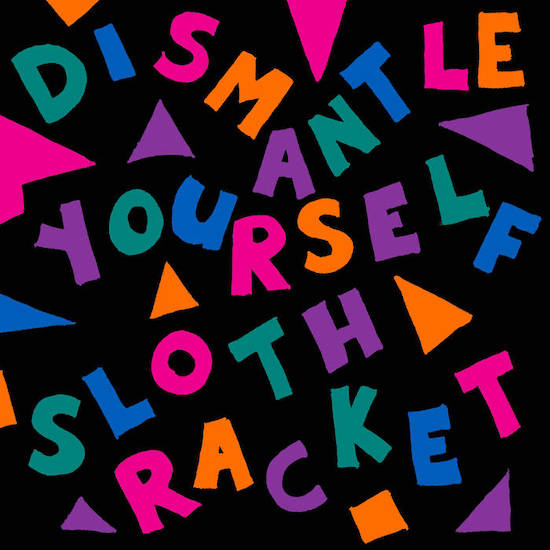A raspy guitar riff and a fierce baritone saxophone lick barge in, overwhelming the unsuspecting silence. The sudden inrush of sound is violent but brief as the two instruments soon settle their differences and choose conversation over confrontation. Like absent-minded people stumbling into each other in a hurry and then reluctantly stopping to say hello, this opening interplay between saxophonist, composer, improviser, and LUME co-founder Cath Roberts and guitarist Anton Hunter is shy and fragile. While the duo tease and explore each other’s ideas, in their sonic dialogue I discover images of inebriated dancers trying to dance a wobbly dance.
Then everything changes again as the delightful interplay is obliterated by a rowdy flash mob of Sam Andreae’s alto sax, Seth Bennett’s double bass, and Johnny Hunter’s drums. At this point Roberts’s band Sloth Racket fully commit to a bop-inspired attack, making the ceiling of the ballroom collapse on the dancers. Impressions keep alternating in my mind as the extemporaneous music evolves and dissolves suggestive motifs. In passing, I glance at the name of the track. ‘Proximity Warning’, it says, and makes my associations change course. Earlier images fade out and become parts of a new narrative.
Benjamin Libet’s dubious experiments in the 1980s seemed to show that our brain makes decisions before our consciousness is aware of them. Sloth Racket’s fifth full-length Dismantle Yourself transposes this principle to a macro level. Here, music precedes meaning. While selecting and naming the cuts, Roberts created a graphic, impressionistic interpretation – a sort of zine – of the ensemble’s music as an accompaniment to the album. “Warning, you are about to be”, the phrase hangs in the top right corner of a page dedicated to ‘Proximity Warning’. Beneath it, an exploded and jumbled cloud of words like “muted”, “discouraged”, and “confused” lurks.
Throughout the five cuts, composed sections and freely improvised segments intertwine. Roberts’s themes prepared through graphic scores linger around just long enough before being overwritten by spontaneous compositions. On ‘We Decide What’s Next’, the group progress through a mischievous jazz noir with double bass thumping a sumptuous line, drums punctuating, and guitar plinking. Then a saxophone’s long, brooding tone shifts the ballad into higher free jazz gears.
While on-the-nose genre associations and tropes are often actively avoided in free improv, Sloth Racket prefer a relaxed approach. The title track ‘Dismantle Yourself’ embraces a metallic jazz rock barrage reminiscent of Caterina Palazzi’s SudoKu KilleR. ‘Terraforming’ grooves with a sense of funk and dark energy to contrast the mournful, free flowing jazz of ‘Butterfly Takes the Train’.
Despite post hoc attribution of meaning being a common thing in free improvisation and free jazz, Roberts’s explicit take on it is refreshing and purposeful. Her writings and graphics guide the conversation around the experience of Sloth Racket’s music, serving as an extramusical instrument. Ultimately, Roberts’s takes on ‘Terraforming’, ‘Butterfly Takes the Train’, and ‘Proximity Warning’ are just suggestions that welcome further interpretations and light the discussion. There is no right nor wrong here.


